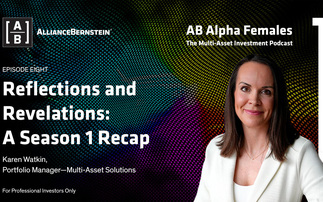Investing for income has never been so challenging. Bond yields have been at record low levels for years in the wake of the global financial crisis and quantitative easing programmes. The Covid-19 pandemic saw these central bank policies resume, putting further downward pressure on interest rates.
Expanding income horizons
For multi-asset investors, searching for income should involve serious consideration of the vehicles through which assets are bought and held, according to AJ Bell's Brennan.
"When you buy a bond fund, it can carry on paying the coupon at a higher rate because it's usually based on the purchase yield, which was obviously historically higher," Brennan explained. "On the other hand, equities as we saw adjusted immediately. But if you bought an investment trust, you can use reserves and you can make overpayments."
Investment trusts, and in particular real estate investment trusts (REITs) including healthcare specialists, have been of interest to the Kleinwort Hambros team as good, defensive, dividend-paying options, according to Hookway.
He added: "I think in the recovery you also have to look at those areas that can be out of favour with investors for any reason, principally in this case because they have cut or suspended their dividends. This is where you have to do your due diligence to assess whether or not they are going to start paying again."
Hookway said there were lots of opportunities to look at diversifiers, moving away from bonds and towards asset classes and sectors with bond-like returns.
"Infrastructure has been mentioned, but also playing some of the secular trends coming out of the Covid recovery, like supermarkets and digital infrastructure companies."
AJ Bell's Brennan also highlighted jurisdictional differences: Luxembourg-domiciled funds, for example, "may be able to distribute yield in a different way to an Irish listed fund".
"I think as multi-asset investors, you have to be much cleverer to try and get that smoother profile," Brennan said. "The danger is you switch to just the equities or high-income dividend sectors and then you end up with an unbalanced fund."
Playing the recovery
James Hawkes, a senior multi-asset portfolio manager at Coutts, added that despite the challenges posed to equities and bonds by the events of 2020, "the current economic environment is quite supportive of income investors".
He added: "Because of the strong dynamic in play, the vaccine rollout, a lot of support from governments and central banks and then a huge amount of pent-up demand with consumers, I think it does allow you to lean into risk assets and to markets that are actually generating a higher income."
Balanced appropriately within a portfolio, Hawkes said "leaning in" to value-orientated and cyclical sectors could help "offset a more structural reduction in yield".
He also highlighted the long-term megatrend of the global transition to a low-carbon economy could produce income-generating assets within areas such as infrastructure.
Hawkes said: "It's important to balance off cyclical opportunities and some of the structural opportunities - climate change transition is a pretty interesting one. Especially for income investors, there are a lot of assets tied into that transition that do generate quite attractive yields.
"[Infrastructure is] historically a great asset for income and a lot of those infrastructure products are tied into the transition. In traditional sectors like utilities, for example, a large number of those companies will lead the way in terms of transitioning, so you can generate quite attractive income there.
"For us, it's very much about balancing that cyclical opportunity now but also having some of these structural winners in the portfolio that can enhance income."
Aviva Investors' Behdenna added: "I think this recovery does provide interesting opportunities for income investors as it is going to be about structural trends, climate change, environmental issues, which are at the forefront of what we do.
"Given our exposure to these themes, I think an area like electric vehicles is a very interesting trend for the future, given the investments from the European Union.
"While some of the big names that we all know in the US do not pay dividends, the car makers do pay dividends in Europe in particular. So that is one way to get exposure to what is going to be a green recovery."
Commenting on the recovery environment for investors, Schroders' Remi Olu-Pitan said: "The reason why the narrative is different this time round is that the winners are going to be different from the previous cycle. I think for investors and asset allocators, we just have to deal with and embrace that there are new winners.
"It is not necessarily a style but I think we have to look at the market differently from growth and value. I think there is an underappreciated middle of good, stable companies with okay valuations that can deliver.
"I think in an environment where you have cyclical growth and rates rising, whatever happens to inflation, it requires a different way of investing."













